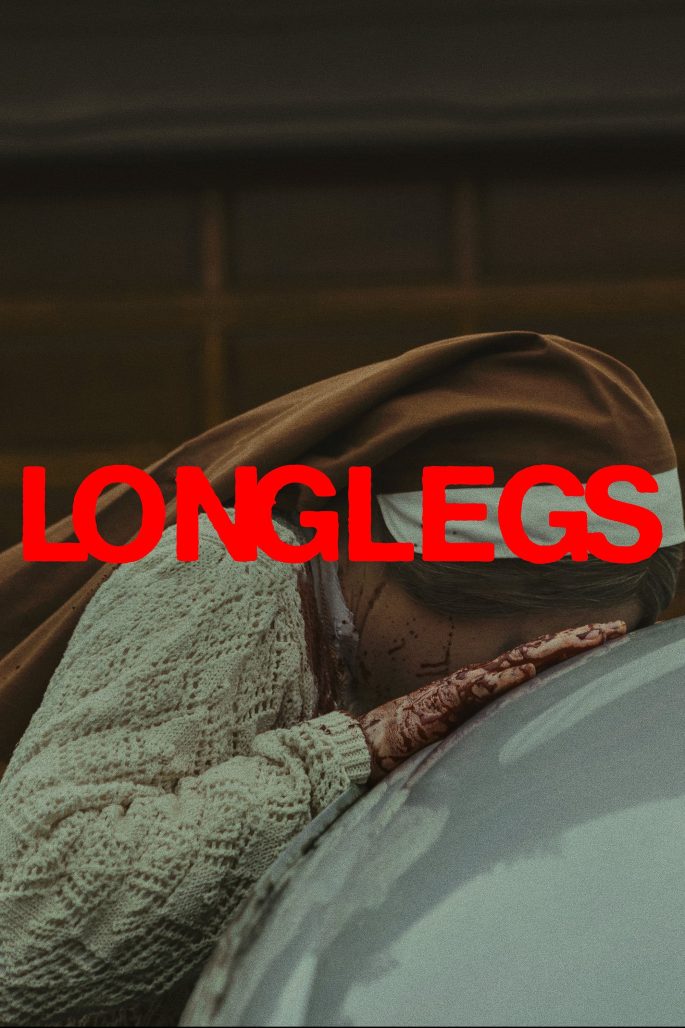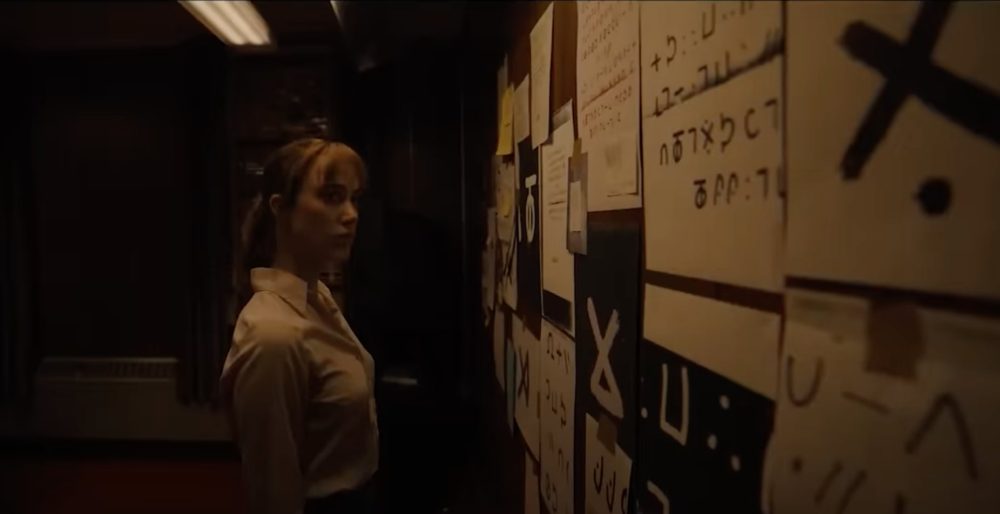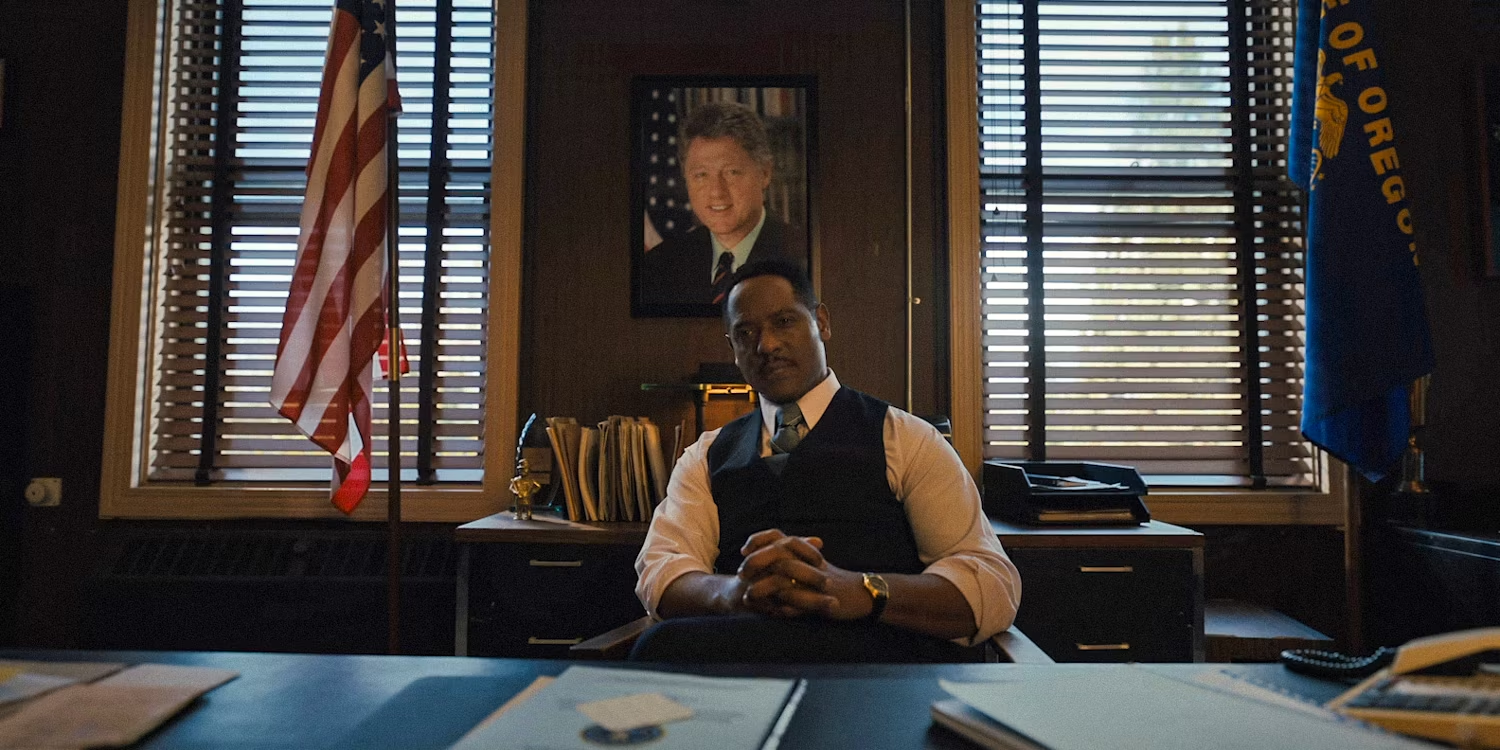LONGLEGS is a masterclass in evil
There’s an exclusive tier of horror movies that’s reserved for films that manage to capture true evil on celluloid. The Exorcist, The Texas Chainsaw Massacre, Sinister, When Evil Lurks, and The Invitation are but some in a very small list that succeed in harnessing a darkness that leave viewers stained with a kind of terror that’ll forever haunt their psyches. Be it for their willingness to probe the unknown a step further than most or for their explicitness in exploring the lengths of extreme violence, these movies are each a masterclass in evil that settle for nothing less than unleashing a new nightmare onto the world.
Oz Perkins’ Longlegs is now a part of that pantheon, and it comfortably sits there as one of the scariest amongst its peers.
 Promoted as one of the most terrifying films of the year and hyped through a clever series of obscure trailers, websites detailing murder victims, and even a phone number you can call to speak to the titular serial killer, Longlegs is the story of an FBI agent called Lee Harker (played by Maika Monroe) as she sets on the trail of a monstrous criminal called Longlegs (played by Nicolas Cage) who kills entire families while leaving no evidence he was there at the time of the bloodshed. It’s not a strict horror/crime story like Silence of the Lambs (which has the soul of a procedural) or an ensemble thriller like Zodiac (which is shot more like a horror film than a procedural). Longlegs puts mood and atmosphere in the lead role and then crafts a narrative worthy of it.
Promoted as one of the most terrifying films of the year and hyped through a clever series of obscure trailers, websites detailing murder victims, and even a phone number you can call to speak to the titular serial killer, Longlegs is the story of an FBI agent called Lee Harker (played by Maika Monroe) as she sets on the trail of a monstrous criminal called Longlegs (played by Nicolas Cage) who kills entire families while leaving no evidence he was there at the time of the bloodshed. It’s not a strict horror/crime story like Silence of the Lambs (which has the soul of a procedural) or an ensemble thriller like Zodiac (which is shot more like a horror film than a procedural). Longlegs puts mood and atmosphere in the lead role and then crafts a narrative worthy of it.
What makes the overall look and sound of the movie work is its meticulous approach to pacing. By keeping to a measured sequencing of events, Perkins gives each scene a chance to have all its elements contribute to the storytelling. Bumps, loud knocks, and even axes being driven into bodies all carry a powerful weight that not only jolt the senses but also hint at the dark underpinnings behind them (an impressive accomplishment from the sound department which includes people like Eugenio Battaglia, Humberto Corte, and Oscar Vargas).
Along with Andrés Arochi on cinematography, Perkins uses many of the same strategies when setting up his wider shots. Early on, we get to see glimpses of strange shapes in wooded areas or mysterious figures moving in the background. They have a lasting effect that’s felt throughout the entire film given they establish a sense of looming danger and terror that might manifest at any moment. The movie extracts a lot of dread from this. It’s as if Longlegs’ presence is haunting every frame in some way, shape, or form. Sometimes it’s the things you can barely make out that unsettle the most. Perkins makes great use of this through a series of shots that slowly zoom in on some kind of movement or struggle happening at a distance. We never get as close to it as we want, which works to generate a very anxious energy that builds and builds to the point of abject disturbance.
This is all to say that there’s not a single scene here where the severity of Longlegs’ crimes don’t indicate the existence of something far more sinister at play. It’s an approach that dares the audience to fill in the blanks in twisted ways. This is what makes the movie special. It pushes people to conjure up the worst things their imagination can muster to match the insanity on display.

Longlegs is violent, but it’s not gratuitous in the ways it could’ve been. We don’t get extensive tours of crime scenes or intrusive autopsy sequences. Instead, we get glimpses of violence not unlike the kinds that get documented in crime scene photographs. We’re shown only what’s necessary to get our minds ready to obsess over what else transpired in those moments. The movie kind of tricks us into coming up with the more macabre details. It’s like that weird kid that insists on taking you to see a dead body they found by the tracks on their way home.
The concept soars thanks to the frighteningly committed performances of the cast. Maika Monroe plays Lee like a woman that knows that fear is a professional requirement to be effective in her job. She interprets Lee as a sensible character that reminds the audience it’s okay to be afraid, and that the opposite would be disingenuous and detrimental to our understanding of the case.
Nicolas Cage, on the other hand, gives one of the best performances in his career. With Longlegs, he has created a new horror icon that can stand shoulder to shoulder with Hannibal Lecter and The Exorcist’s demon Pazuzu. He’s nearly unrecognizable, and not just because of the prosthetic work done on his face. He possesses an unsettling and discomforting sense of physicality and verbality that makes each of his appearances a distinct showcase of wickedness.

Of special note is Blair Underwood’s Agent Carter, the man who calls in Lee to help out with the pursuit of Longlegs. He has the gruff personality of a seasoned FBI agent that hides years of psychological scars under his hard shell, but he also conveys a sense of disturbance about the case that makes him vulnerable. Underwood elevates this character and adds to the overarching fear surrounding the killings.
Longlegs is like a message from a serial killer left at a crime scene, written in blood on a wall for all to see. It’s a bleak foray into very, very bad things that speak to other possibilities within horror. Perkins has crafted an experience that argues the genre can go farther, smarter, and scarier. It’s a movie about terrible discoveries and why they must be pursued. It’s powerful enough to steer filmmaking into more frightening places, to go beyond the abyss. Longlegs has opened an alternate path to evil, and we would do well to explore it knowing well that fresh nightmares await.
Related

Source link
